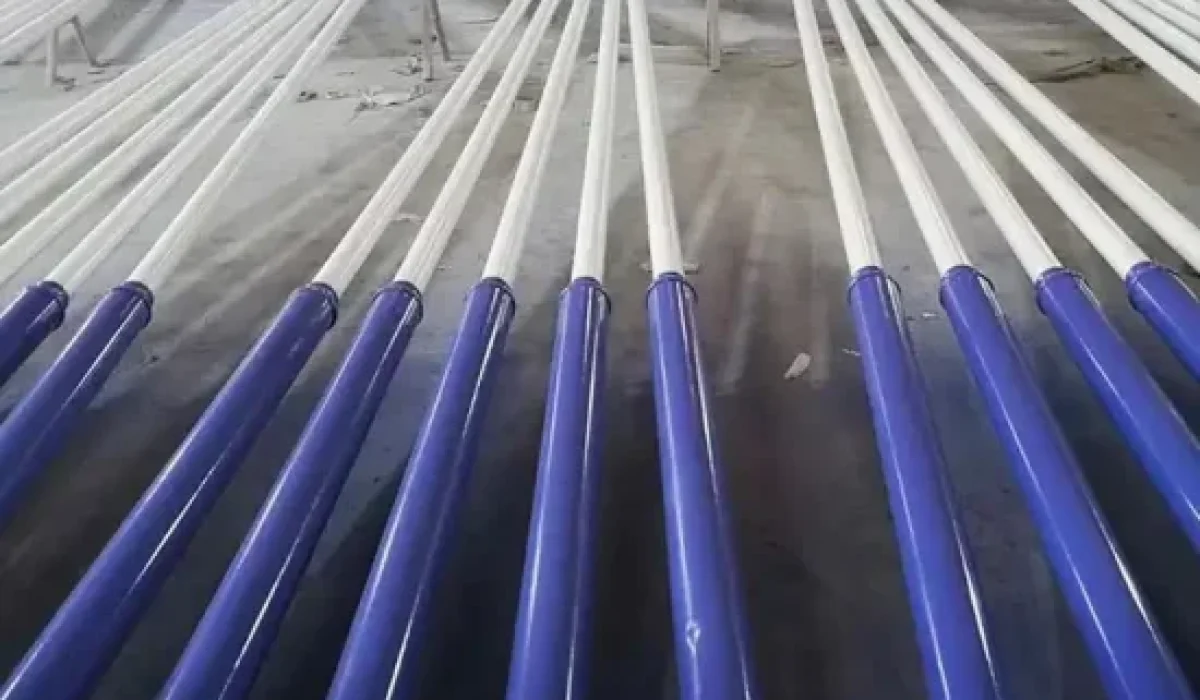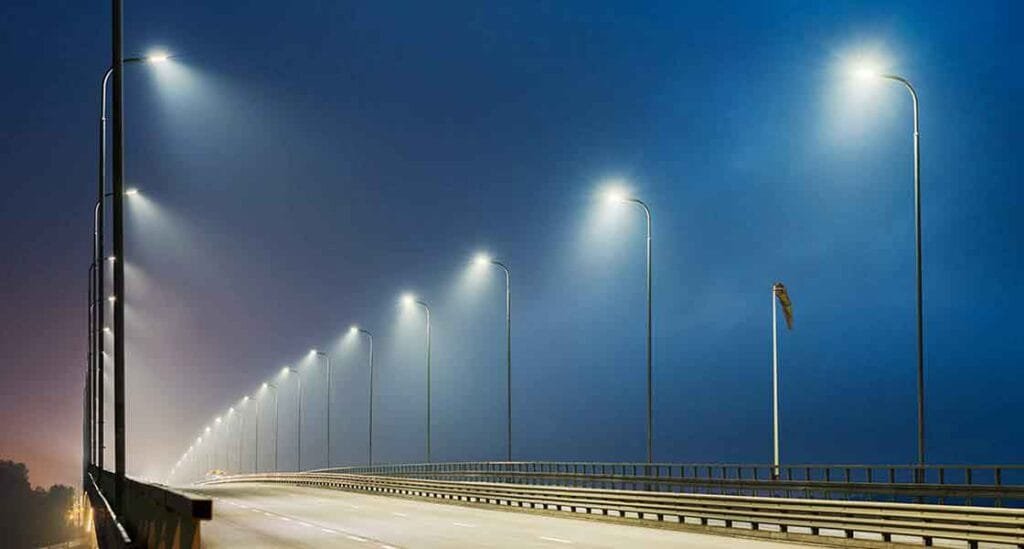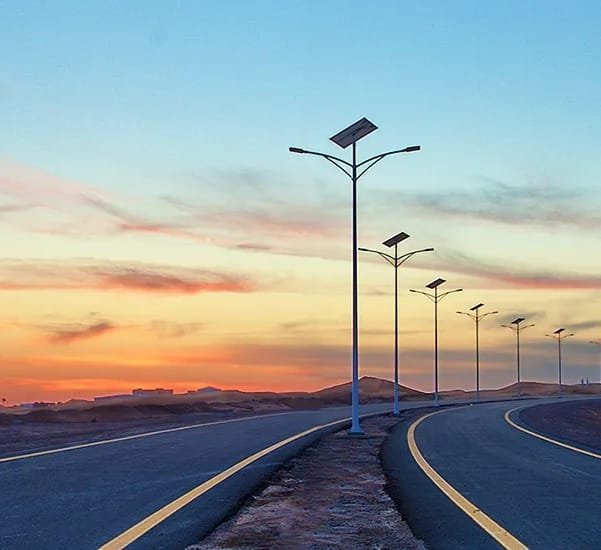In infrastructure planning, the choice of a galvanized street light pole often determines whether a project will be cost-effective, safe, and long-lasting. For EPC contractors, consultants, and government procurement officers, the decision goes beyond price—it is about ensuring decades of reliable lighting with minimal maintenance.
Unlike painted or untreated poles, galvanized poles undergo a zinc-coating process that shields steel from corrosion. This single step changes the pole’s life cycle, making it a preferred solution across Africa’s coastal cities, inland industrial zones, and major highways.
In this article, I will share the seven key benefits of galvanized street light poles, supported by real-world examples from infrastructure projects across East and Central Africa.
1. How Does Corrosion Resistance Improve Pole Longevity?
The zinc coating on galvanized street light poles protects steel from rust, moisture, and road salts. This makes them ideal for outdoor use in environments that range from coastal regions with high salinity to dusty inland highways.
Case in Point – Mombasa, Kenya
During a port modernization project in Mombasa, painted poles began corroding within five years due to sea air exposure. By switching to galvanized poles, the city reduced replacement cycles and avoided costly repainting. Today, the same poles have stood for more than 15 years with minimal visible damage.
✅ Key takeaway: Galvanized street light poles are proven to perform in high-corrosion zones where painted poles fail quickly.
2. What Is the Lifespan of a Galvanized Street Light Pole?
A galvanized street light pole can last 25–50 years, depending on environmental conditions. This is significantly longer than the 5–10 years typical of painted or untreated poles.
Case in Point – Kampala, Uganda
In a highway expansion project, galvanized poles installed in the early 2000s are still operational today—over 20 years later. By contrast, a neighboring district that chose painted poles has replaced its lighting structures twice within the same timeframe.
✅ Key takeaway: EPC contractors can ensure two to three decades of performance without major replacements when choosing galvanized poles.
3. Why Are Galvanized Street Light Poles Low Maintenance?
The self-healing property of zinc ensures that even if the coating is scratched, the steel remains protected. Unlike painted poles that require periodic recoating, galvanized poles need minimal attention.
Cost Impact Example
- Painted poles: Require repainting every 3–5 years.
- Galvanized poles: Require only basic inspections, with no recoating for decades.
Case in Point – Dar es Salaam, Tanzania
The city’s switch from painted to galvanized poles reduced annual maintenance budgets by over 40%, freeing funds for other urban upgrades.
✅ Key takeaway: Galvanized poles cut recurring maintenance costs, making them a budget-friendly option for public projects.
4. How Durable Are Galvanized Street Light Poles?
Galvanized steel poles are designed to withstand strong winds, heavy fixtures, and harsh climates. They offer excellent structural stability, supporting LED floodlights, CCTV cameras, and even solar panels.
Case in Point – Nairobi, Kenya
When Nairobi upgraded its main arterial roads, galvanized poles were selected for their ability to support dual-arm LED fixtures and integrated smart-city devices. These poles have successfully endured high-traffic stress and seasonal storms without failure.
✅ Key takeaway: Galvanized poles provide high structural resilience, ensuring safety and reliability in demanding environments.
5. Are Galvanized Street Light Poles Cost-Effective?
Although initial costs are higher than painted poles, galvanized street light poles save money over time by reducing replacement and maintenance needs.
Total Cost of Ownership Comparison (20-Year Horizon):
| Pole Type | Initial Cost | Maintenance | Replacement | Total Cost |
|---|---|---|---|---|
| Painted Steel | Low | High (repainting) | Frequent (every 8–10 years) | High |
| Galvanized Steel | Moderate | Minimal | Rare (25–50 years) | Low |
| Aluminum | High | Moderate | Occasional | High |
Case in Point – Addis Ababa, Ethiopia
A major boulevard lighting project compared lifetime costs and found that galvanized poles reduced total project expenses by nearly 30% over 25 years.
✅ Key takeaway: Galvanized poles deliver long-term financial savings, even with higher upfront costs.
6. Where Can Galvanized Street Light Poles Be Used?
One of the greatest strengths of galvanized poles is versatility. They adapt to diverse environments and applications:
- Highways and expressways – requiring tall, robust poles.
- Urban streets and residential areas – for consistent, safe lighting.
- Industrial zones and ports – where durability is critical.
- Parks and walkways – combining function with decorative designs.
Case in Point – Kigali, Rwanda
The city’s green initiative included installing decorative galvanized poles in public parks. These poles combined functionality with aesthetics while offering a 30-year design life, aligning with Kigali’s sustainability goals.
✅ Key takeaway: Galvanized poles are adaptable for both utilitarian and decorative purposes.
7. How Are Galvanized Street Light Poles Environmentally Friendly?
Galvanization extends product lifespan, meaning fewer poles need to be manufactured, transported, and installed. This directly reduces carbon footprint and material waste.
Case in Point – Coastal Mozambique
An NGO-led project replaced frequent pole replacements with galvanized solutions, cutting waste by over 60% in 15 years. The environmental impact was substantial, with reduced steel demand and fewer disposal issues.
✅ Key takeaway: Galvanized poles support sustainable infrastructure by lowering lifecycle waste and energy use.
Conclusion
A galvanized street light pole is not just an infrastructure choice—it is a strategic investment in safety, longevity, and sustainability. From coastal cities to inland highways, galvanized poles have proven their ability to outperform painted, untreated, or even aluminum alternatives.
For EPC contractors and government decision-makers, galvanized poles offer:
- Corrosion resistance for harsh climates.
- 25–50 years of service life with low maintenance.
- High durability under heavy loads and strong winds.
- Cost-effectiveness over the entire lifecycle.
- Versatility and sustainability in applications.
✅ Final takeaway: When planning street or industrial lighting, galvanized street light poles are the smart, future-proof choice for Africa’s growing infrastructure needs.
FAQ: Key Benefits of Galvanized Street Light Poles
What is the main benefit of a galvanized street light pole?
Its zinc coating prevents corrosion, ensuring decades of reliable performance.
How long do galvanized street light poles last?
Typically 25–50 years, depending on environment and usage.
Are galvanized poles cheaper in the long run?
Yes. While upfront costs are higher, maintenance and replacement savings make them more economical.
Can galvanized poles be used in coastal cities?
Absolutely. They are specifically effective in high-salinity environments.
Are galvanized poles environmentally friendly?
Yes. Their extended lifespan reduces waste and lowers the carbon footprint of infrastructure projects.





